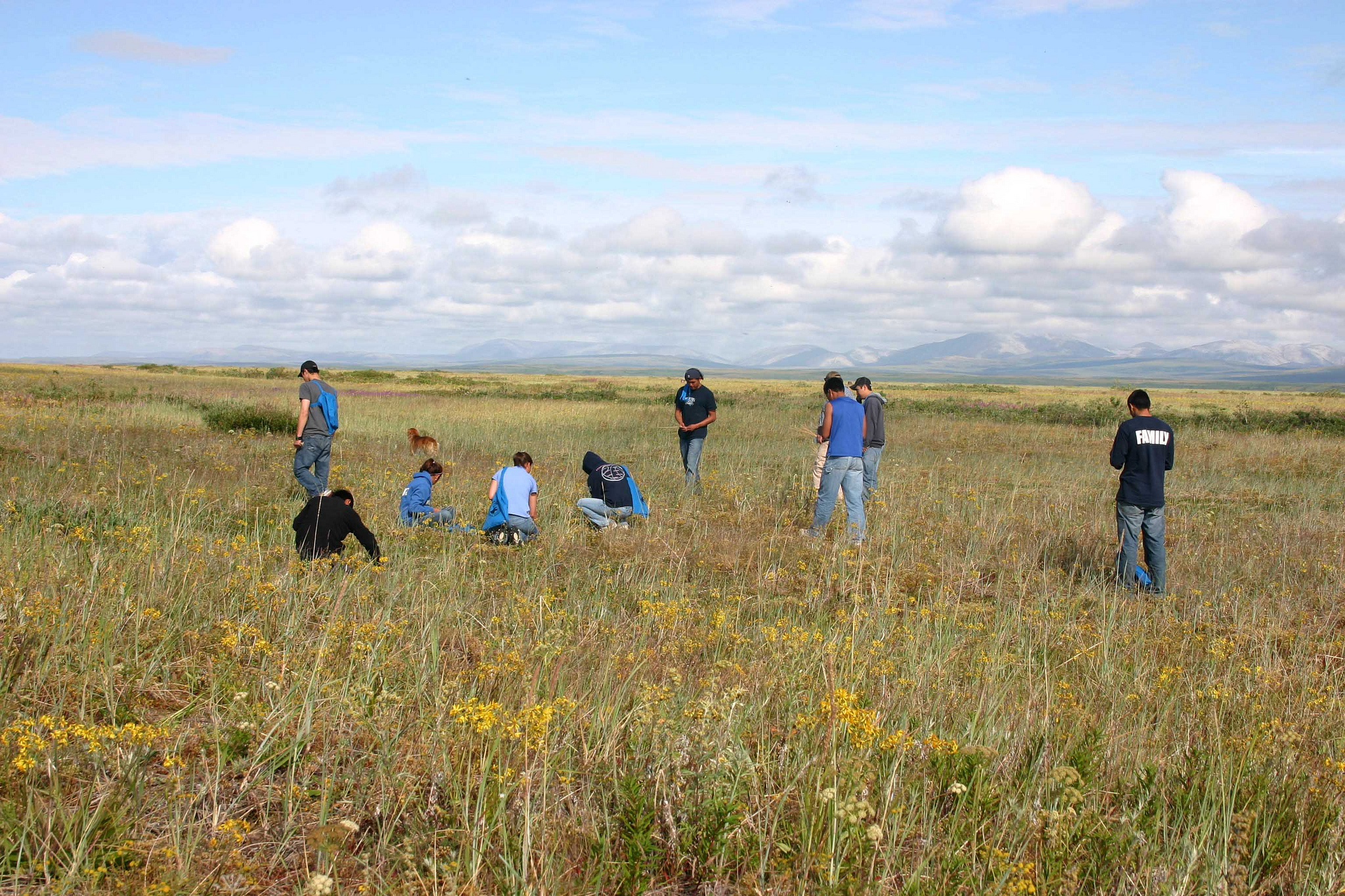Climate change is affecting wild berries, and the people who depend on them
Berries are ripening earlier, in some cases threatening to upend traditional subsistence patterns.

For many people in regions across the Far North who depend on wild food, there is a common traditional pattern: Harvest salmon when the fish runs arrive, then pick berries after the fishing season is over.
But now in many places fishing and berry-picking seasons have converged, thanks to a warming climate, said experts at the Alaska Forum on the Environment, a week-long conference held last month in Anchorage.
“The timing of the berry harvest and the timing of the salmon runs are co-occurring,” said Rachel Loehman, a research ecologist with the U.S. Geological Survey. “That means that people are having to decide which resource to go out and collect.”
That phenological mismatch is one of the changes that a warming climate has brought to the wild fruit crops that feed people and animals in the far north.
Loehman is leading a new USGS project to monitor berries — and how climate change is affecting them — in Alaska’s Yukon-Kuskokwim Delta. The tundra-dominated region of western Alaska has a largely Yupik population, and residents pursue traditional Native diets, of which berries are important components.
The project is enlisting local people to document changes in berry crops, pinpoint causes of those changes and make projections into the future. The information produced could help guide future management decisions, including decisions about how development projects should be designed, Loehman said.
There are already some preliminary results, she said. Among them: changing locations for berry crops, which can be a problem for people who have developed traditional berry-gathering sites.
“If all of a sudden you have to spend five times as many hours or five times as much fuel, that’s not sustainable,” Loehman said.
The project is monitoring other effects, too, including fall storm surges that are increasingly sending plant-damaging saltwater onto land, more frequent and severe wildfires that change the composition of plant communities and snowpack levels — berry crops are poor in years following low snowpack seasons, said Loehman.
Berries are important to wildlife as well as to people, said Jerry Hupp, a USGS wildlife biologist who spoke at the forum. Consider, for example, the bar-tailed godwit, which flies nonstop from Alaska to New Zealand in the fall, he said. A diet rich in Alaska wild berries may be essential to that long-distance seasonal migration, he said. “Some of the compounds that are good for people may facilitate some of the muscle activity that makes these long-distance flights possible.
The food-gathering dilemma posed when berry crops and salmon runs converge has already resulted in some behavioral changes for Kodiak brown bears, iconic Alaska animals that grow huge by feasting on abundant salmon. In some recent years, berries that used to ripen in August are now ready by July, and video monitoring has shown that the brown bears in the Kodiak Archipelago have been abandoning salmon-bearing streams early to eat the newly ripened berries. Details are described in a study published in the Proceedings of the National Academy of Sciences.
The ongoing USGS berry-monitoring project follows up on a previous study, a joint project by the USGS, the Alaska Native Tribal Health Consortium and the University of Alaska Anchorage, that produced a 2015 report titled “How Are Your Berries.” That project used personal surveys gathered in 2013 and 2014 from residents of more than 70 Alaska communities to gauge changes in berry growth. It found that berry crops have fluctuated widely in recent years, with quantities that are much more volatile than they had been in the past.
Climate effects on berry crops are not always straightforward, experts said. Production of wild berries takes nearly two years from bud to fruit, so effects can be delayed, said Christa Mulder of the University of Alaska Fairbanks. And the evidence so far suggests that berries develop earlier in warmer temperatures but not necessarily faster, she said.
One climate-related concern is that invasive species that might divert pollinating insects away from the native berry-producing plants. Mulder and Katie Spellman, also of UAF, conducted an experiment that tested pollinating insects’ preferences for berry plants and sweet clover, an invasive plant in Alaska. They found that the fragrant sweet clover drew a much wider diversity of pollinators than the native berry plants.
Yereth Rosen is a 2018 Alicia Patterson Foundation fellow.